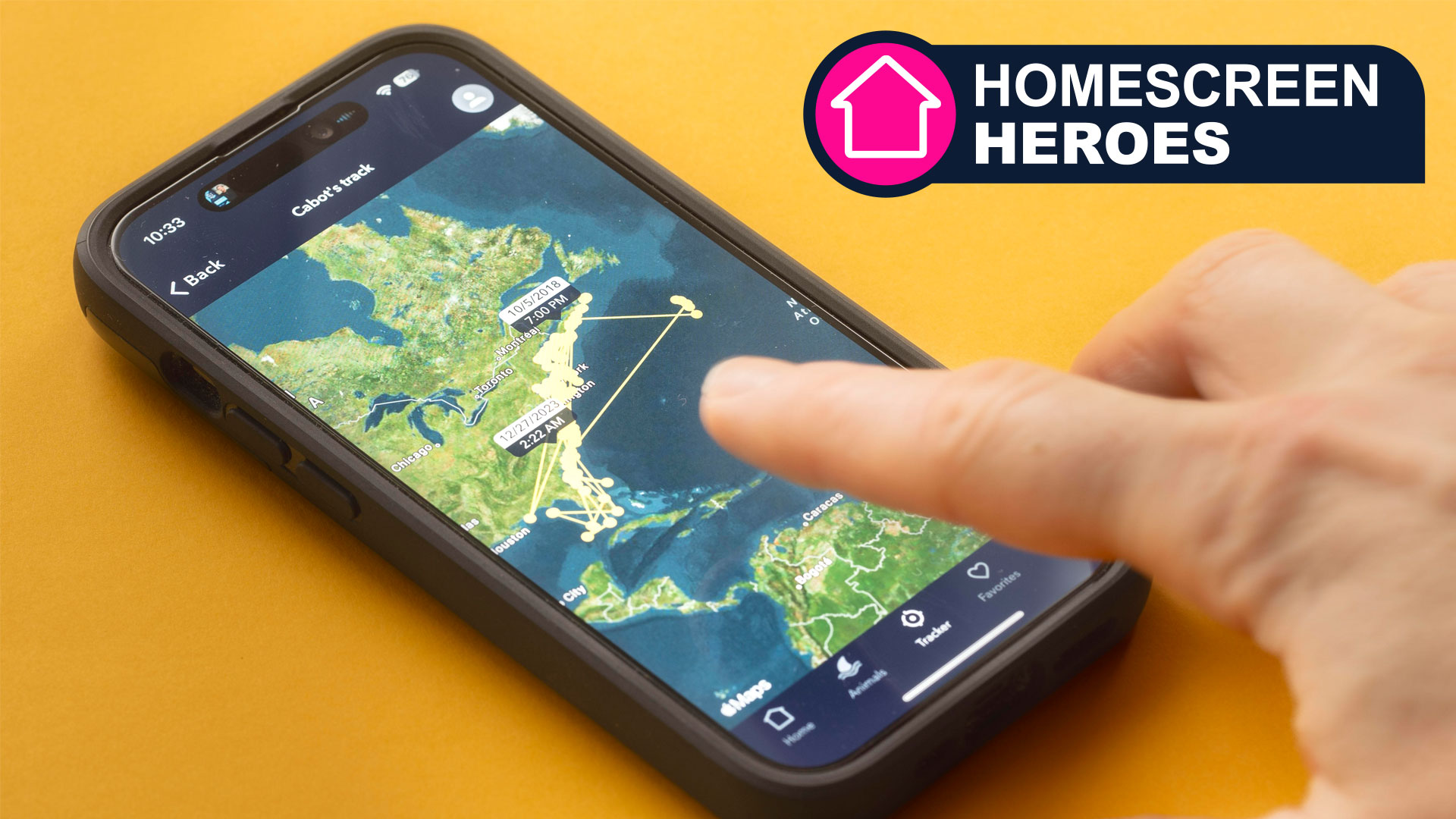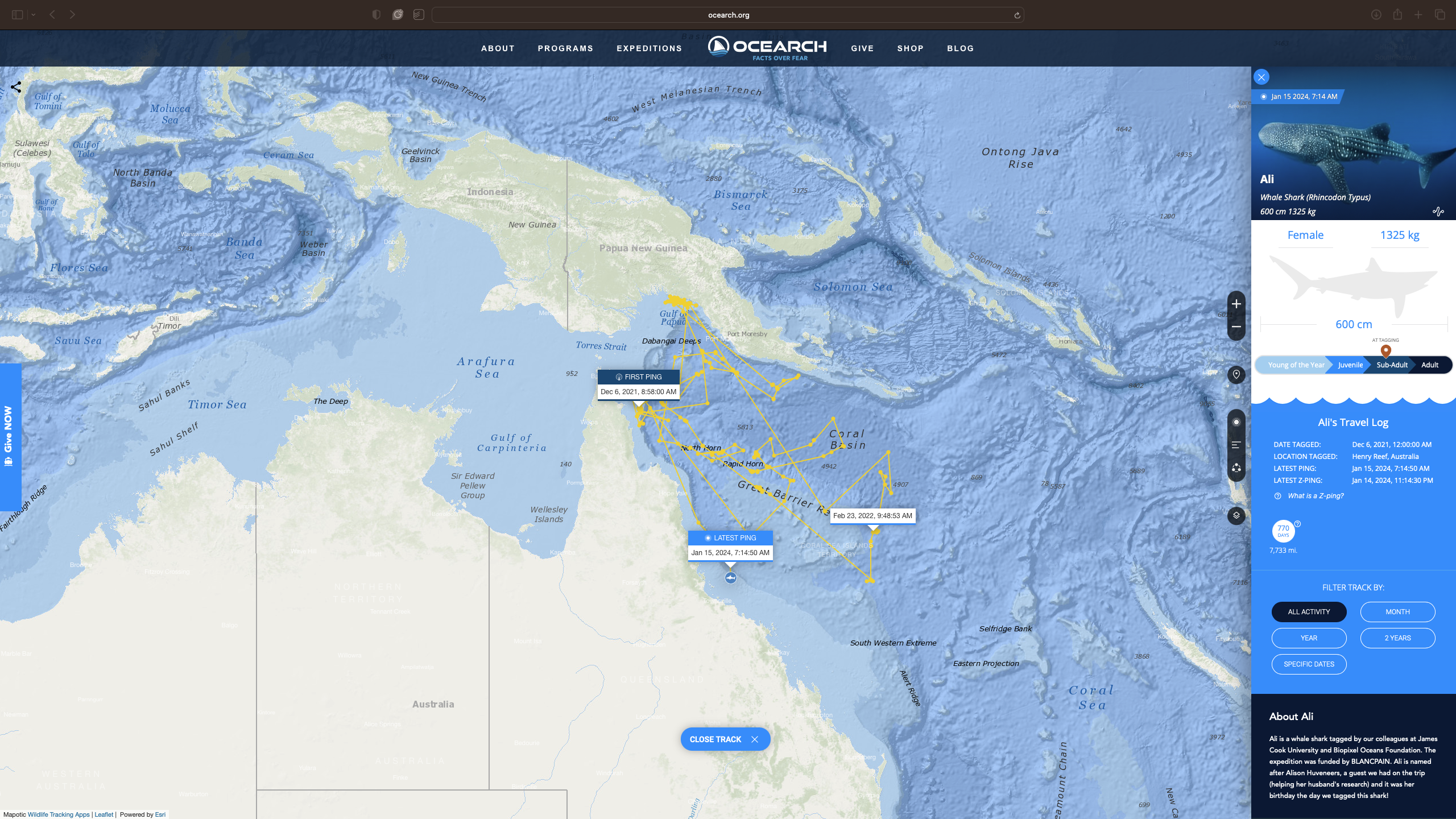I replaced Doom Scrolling with shark stalking
Homescreen heroes: Shark Tracker is like Flight Radar for sharks

Have you ever wondered where sharks swim? I don't mean 'the ocean', and there is no punchline here. I just wonder if sharks ever just get bored and decide to go off swimming somewhere else. After all, they are like the final level boss of the sea - surely, they can do whatever they want?
This is part of a regular series of articles exploring the apps that we couldn't live without. Read them all here.
Now, you can answer these questions thanks to Shark Tracker. Its premise is simple: it tracks sharks.
If you like watching the little yellow planes on the FlightRadar app (one of our 10 Best apps for Armchair Travellers), this is similar, except it has sharks. And sharks are cool. Arguably, they are cooler than airplanes.
The app is powered by OCEARCH, a global non-profit organization researching sharks and other key marine species. They humanely catch and tag sharks with geo-location tags, which allows them to work out where different species of shark travel to during various seasons and stages in their life cycle. These findings help us learn more about sharks, what areas of the world's oceans are essential for them, and where we should focus our efforts to protect them.
It's not just sharks, though; If you go into the settings, you can also select to track other sea life, such as seals, turtles, swordfish, and alligators.

Swimming with sharks
Incredibly, OCEARCH provides this as an open-source shark tracking service. The app is free to download for iOS and Android and can be found online at the OCEARCH website. All the tracking data can be accessed for free. So, whether you are a marine biologist, a student writing a paper, or just can't wait until the Discovery Channel's Shark Week for your next fix, Shark Tracker is there for you.
Like Flight Radar, the central part of the app is the tracking section, which is a map with icons showing the last known location of each shark. There aren't too many 'active' sharks, but each has been given a human name, and you can add them to your favorites. I currently follow Fast Ball (a Shortfin Mako Shark), Ali (a Whale Shark), and Ormond (a Great White).
Get daily insight, inspiration and deals in your inbox
Sign up for breaking news, reviews, opinion, top tech deals, and more.
When the shark breaches the water, its tracker should ping and hopefully send its location to the central OCEARCH sharking tracking HQ. When the tracker sends a ping but isn't out of the water long enough to connect to a GPS satellite and send location, it is called a Z-Ping. These Z-Pings are reasonably common; full-location pings are rare. It can be months between full location pings, and it is interesting to see where a shark suddenly pops up. When a notable location ping appears, it is usually accompanied by a short post commenting on what the location may mean, such as whether it looks like an animal is heading somewhere for food or breeding.
Switching the settings to show all tagged sea life that is part of the project reveals a wealth of information, and it's interesting to click around and see different species from around the world and comprehend the vast distances some have traveled. However, most of the current activity seems to center around the Atlantic Ocean, the results of recent tagging expeditions. The app joins the dots between the pings to see the sharks' path up and down the continental American coastline.
Some of the animals haven't left a ping for a while, which can be down to several reasons, but one of the most common is that the battery on the tracker simply ran out; the most powerful trackers only have batteries that last around a year, so try not to get to emotionally attached.

Feel closer to the ocean
Shark Tracker isn't a productivity or health app that will transform your life, but it is a wholesome alternative to doom strolling for me. I occasionally open the app and see if Ormond has popped up somewhere; he was last seen off the coast of New York. Before that, he was off the coast of Nova Scotia - some distance from his first track near Florida over 400 days ago. There was a Z-Ping from Ormond a week ago, so he is still swimming around somewhere.
Shark Tracker doesn't provide that dopamine buzz of notifications every few hours, but that makes the notifications that do pop up all the better. There is something grounding about taking in the sheer distances that the creatures travel.
For someone who lives in the concrete of London, it makes me feel a little closer to the ocean and the animals in it.
You might also like

Richard Sibley is a photographer and writer passionate about travel and landscape photography. With over 15 years of experience writing and reviewing in the photo industry, he was formerly Deputy Editor at Amateur Photographer magazine and has had his words and images published in numerous other magazines and websites. Richard combines his love for photography with a deep interest in technology and gadgets. Beyond his professional pursuits, Richard embraces fatherhood and finds solace in gardening, cold plunges, long walks, and listening to podcasts. He is an aspiring minimalist, though the constant lure of new gadgets significantly challenges this ideal.